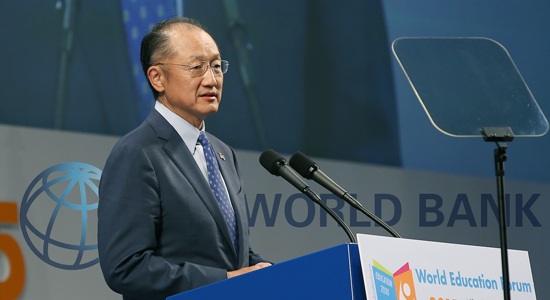The World Bank has raised the alarm that efforts to eradicate poverty had remained stagnant as some alleviation indices have remained unchanged since the 1960s. At an event to mark the 25th Anniversary of the International Day to Eradicate Poverty, the World Apex Bank said that education which was a major determinant of poverty alleviation had stalled for decades.
The Bank expressed worry that only 12 per cent of today’s youth have more education than their parents. According to early findings from an upcoming report by the bank, “the social status of one’s parents is as influential today as it was 50 years ago in determining a person’s future.
Focusing squarely on how one generation’s education can make or break the next generation’s success, the preview paper put together the first pieces of the “economic mobility puzzle”. The study called for urgent need for investment in early childhood development, education access and quality, maternal and child health, nutrition, infrastructure, water and sanitation, to improve mobility and build human capital.
Giving a breakdown of some of the bank’s findings, the World Bank Senior Director, Poverty and Equity, Mrs Carolina Sanchez, in a video conference said that education from generation to generation had stalled over the last half-century. “Only about half of people born in an average developing economy in the 1980s have more education than their parents – showing no improvement when compared to those born in the 1960s.
“If the world does not alter the way it invests in its children, particularly those coming from less advantaged backgrounds, there is little reason to believe that this assessment will be different 10 years from now, making an end to extreme poverty by 2030 an even bigger challenge,” she said.
Sanchez said also that low levels of upward mobility were particularly pronounced in the developing world, especially in Sub-Saharan Africa. “For example, only around 12 percent of today’s young adults (born in the 1980s) in some Sub-Saharan African economies have more education than their parents, compared to more than 80 percent of the same generation in parts of East Asia.
“Breaking the cycle of low relative mobility and high inequality will require equalizing opportunities to reduce disadvantages from predetermined circumstances, such as parental education or income, gender, or geographic location. It is common for children from poor families also to reside in poor neighborhoods and attend poor schools. Levelling the playing field could mean investing so that the children in poor neighborhoods could have access to better schools and public programs that close the gaps in learning. In general, equalising opportunities should be a priority for economies seeking to reduce inequality over the long term, which is a growing concern for governments in developing and developed economies alike,” she said.
Similarly, Mr Maninder Gill, Director, Social, Urban, Rural, and Resilience, World Bank, called for local actions to ending poverty and the need to pay extra attention to vulnerable groups such as rape victims and people leaving with disabilities.
“Behavioural experiments show that people are highly averse to inequality that they perceive as unfair, but they might be willing to accept higher inequality of outcomes when it is perceived to be associated with “merit”,” he said.
The Word Bank expressed worry that although poverty had generally reduced, the lack of more education posed a great challenge to poverty alleviation in the nearest future. According to its most recent estimates, in 2013, 10.7 per cent of the world’s population lived on less than 1.90 dollar a day, compared to 12.4 per cent in 2012. That’s down from 35 per cent in 1990.
Nearly 1.1 billion people have moved out of extreme poverty since 1990. In 2013, 767 million people lived on less than 1.90 dollars a day, down from 1.85 billion in 1990. In Sub-Saharan Africa, the number of poor in the region fell only by 4 million with 389 million people living on less than 1.90 dollars a day in 2013, more than all the other regions combined.
In Nigeria, extreme poverty was 53.5 per cent in 2009, then fell moderately to 46.8 per cent in 2015. Thus almost 85 million people lived below the international poverty line of 1.90 dollars per day. The economic contraction in 2016 led to a projected increase in poverty by close to 2 per cent reaching 48.4 per cent.
















)


